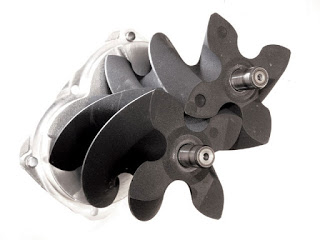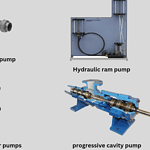Today we will learn about supercharger and types of supercharger used in automobiles. You have many time heard the word “supercharger” or “supercharged car” but what the exact signification or meaning of it. Before learning about it, we should first learn the basic idea behind it or why we need it.
The whole history of supercharger is connected with power generation. When the engine was invented, they produces much less power. There were two ways to increase power generation of an engine. The first one is by increasing the engine size; a bigger engine sucks more fuel and develop more power. The other option is to draw more charge (air fuel mixture) into the engine cylinder by use of a compressor hence the engine generates more power. The later process is known as supercharging.
The supercharging is a process of draw large amount of compressed charge (fuel air mixture) into the engine cylinder which burns and generate more power comparatively the simple one. The device which provides this compressed air is known as supercharger. It is just a compressor which is run by the engine crankshaft. The power transmission between engine crankshaft and this compressor is achieve by a belt drive.
According to their design, various superchargers are available in market. The detail description about its types is given in later portion of this article.
Types of Supercharger:
There are mainly two types of supercharger. The first one is known as positive displacement supercharger and other one is known as Dynamic supercharger. The basic difference between both of them is that the positive displacement supercharger maintain constant level of pressure at all engine speed whereas the dynamic supercharger deliver increasing pressure with increasing speed. This is basic fundamental difference between them. These superchargers further subdivided as given below.
1.)Positive Displacement Supercharger:
As we discussed in early section that these superchargers deliver the same volume of charge at any engine speed or these superchargers are not depended on speed of the engine. The major types of positive displacement supercharger are root style and twin screw.
A.) Root style:
This design has two specially designed rotors which rotate in opposite direction (one is clockwise and other is anticlockwise) to compress the air. According to the rotor design this supercharger is further subdivided into two type: Two lob rotor, three lob, four lob rotor etc. As the rotor rotate, they trap the air by these lobs coming from suction side or inlet port and forced it towards discharge side or outlet port. The amount of air compressed is independent on the engine speed and each time this supercharger compresses the same amount of air.
Advantages:
- Simple design
- Best suited with high speed engine
Disadvantages:
- Pulsing airflow at low speed.
- Less efficiency.
- Heavy in weight.
- Create lots of heat due to friction.
- Back leakage at low speed.
- Provide same amount of air at both low and high RPM.
B.) Twin screw supercharger:
As the name implies, this type of supercharger have two screws which rotate in different direction. One of the screw rotate clockwise and other one is anticlockwise direction. The working of this supercharger is same as root type. It also sucks air from one side and delivered it to outlet port. This device provide smother air flow comparatively root style.
Advantages:
- No back leakage problem.
- Provide smother air flow.
Disadvantages:
- High heat generation due to friction.
- Noisy in operation.
Dynamic Supercharger:
As we discussed earlier, these type of supercharger gives increasing air pressure as increasing engine speed. The supercharging effect in this type is highly depended on the engine speed. It also subdivided into following types.
A.) Centrifugal Type
As the name implies, this type uses centrifugal force to compress the air. The design of this supercharger is same as the centrifugal compressor. It has a impeller which is connected with the crankshaft with the help of belt drive. When the engine rotates, it makes rotate the impeller which sucks the air from one side. The centrifugal action acts on this air which increase its kinetic energy and delivery it to a diffuser. The air enter into the diffusion have high velocity at low pressure. The diffuser converts this high speed low pressure air to low speed high pressurized air. This high pressurized air then sent to the engine.
Advantages:
- It is small in size.
- High efficiency.
Disadvantages:
- The amount of air is not fixed.
B.) Axial flow
C.) Pressure wave
This is all about types of supercharger. If you have any query regarding this article, ask by commenting. If you like this article, don’t forget to share it on social networks. Subscribe our website for more informative articles. Thanks for reading it.











